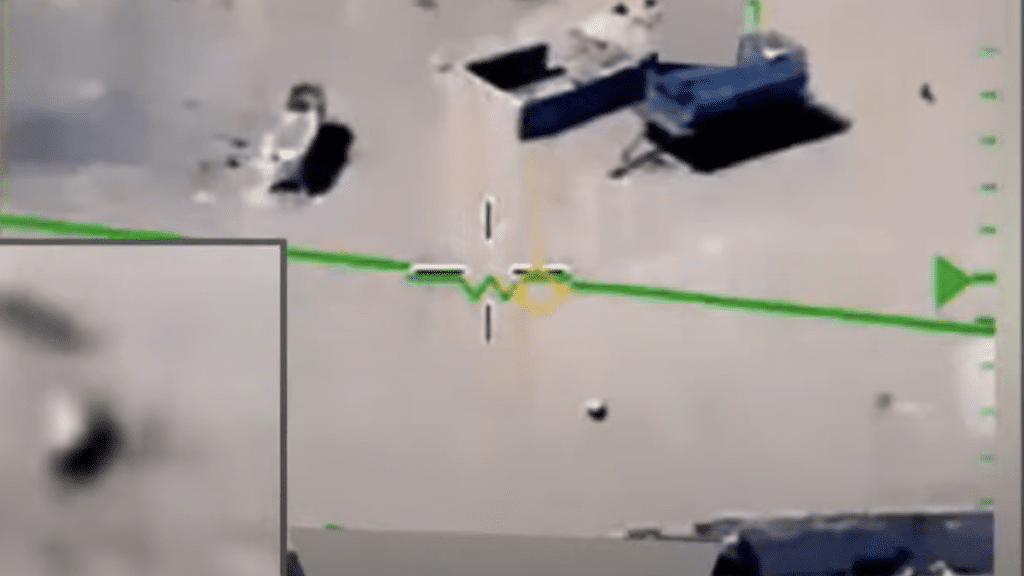The Pentagon And NASA Have No Earthly Idea What These Flying Metallic Orbs Really Are

The Pentagon and NASA are struggling to identify metallic orbs that have lately been sighted around the world at more and more frequent intervals. The newly-created All-Domain Anomaly Resolution Office says the U.S. could be doing more to identify these white or silver orbs, which range between 1 and 4 meters (3-13 feet) in size and regularly fly just below commercial flight altitudes.
We’re Driving the 2024 Integra Type S, What Do You Want to Know?
The AARO now refers to these orbs as Unexplained Anomalous Phenomena, or UAPs, rather than Unidentified Flying Objects, or UFOs, which is how we used to refer to so-called flying saucers or any other alleged alien craft in the past. The mysterious objects have been renamed to account for more objects that may not fall under the narrow classification that UFOs entail, according to Vice.
The idea, presumably, is that the term UAP accounts for a broader category of anomalies, and will allow the researchers at AARO to investigate the mysterious metallic orbs, as well as similar phenomena, in a broader sense — even by leveraging unofficial sources of footage and information, such as crowd-sourced surveillance footage from smartphones that belong to regular people.
Public Meeting on Unidentified Anomalous Phenomena (Official NASA Broadcast)
To that end, NASA and the Department of Defense established AARO to look into such objects, and to do so publicly. On Wednesday, the newly-formed research team held its first public meeting, sharing new footage of UAPs that have been spotted around the U.S. and the rest of the world. During its first open meeting, the team said that sightings are pretty frequent: the team receives anywhere from 50 to 100 reports per month.
Of course, only about two to five percent of sightings turn out to be “really anomalous,” as AARO Director Sean Kirkpatrick notes. The departments just lack enough data to make definite conclusions for now. Even so, the orbs are popping up all over the world, as Vice reports, and NASA and the Pentagon say the rate at which they’re being spotted is going up.
That could be due to a number of things, among them the likelihood of pilots or certain other witnesses to report the sightings in the first place. In the past, such sightings may have gone unreported due difficulty in verifying any of the claims, so first-hand accounts were less likely. In fact, the AARO says that there’s still some stigma behind reporting such sightings, per Vice:
Speakers at the meeting emphasized the need to collect more high-quality UAP data and lamented the stigma surrounding this topic, which they said makes it less likely for people to report unidentified phenomena. Indeed, multiple speakers noted that members of NASA’s UAP study team have been subjected to harassment as a result of their work in this field.
“It is really disheartening to hear of the harassment that our panelists have faced online all because they’re studying this topic,” said Nicky Fox, associate administrator for the NASA’s Science Mission Directorate, during the meeting. “NASA stands behind our panelists and we do not tolerate abuse. Harassment only leads to further stigmatization of the UAP field, significantly hindering scientific progress and discouraging others to study this important subject matter.”
The team behind AARO says that the stigma around such sightings needs to be broken and that the U.S. has to start being on the lookout for these orbs in a more focused attempt to categorize and identify the orbs. In order to do that, the new office says the Pentagon and NASA will need help from the general public, as well as the private sector and research institutions or universities.
So far, the agency has a “target package,” which is a surface overview of what the orbs are, more or less: most UAP reports observe the orbs at altitudes where human aircraft fly, at 10,000 to 30,000 feet; the orbs range between being stationary and being capable of flight speeds up to Mach 2; and despite their velocity, no thermal exhaust has been detected thus far in any of the reports.
The orbs are typically round — hence the orb — and they tend to be either white, silver, or translucent. It’s unclear how the translucent orbs are detected, however, though that may be down to moderate sizes reported of up to 4 meters, or about 13 feet — the size of a small car.



